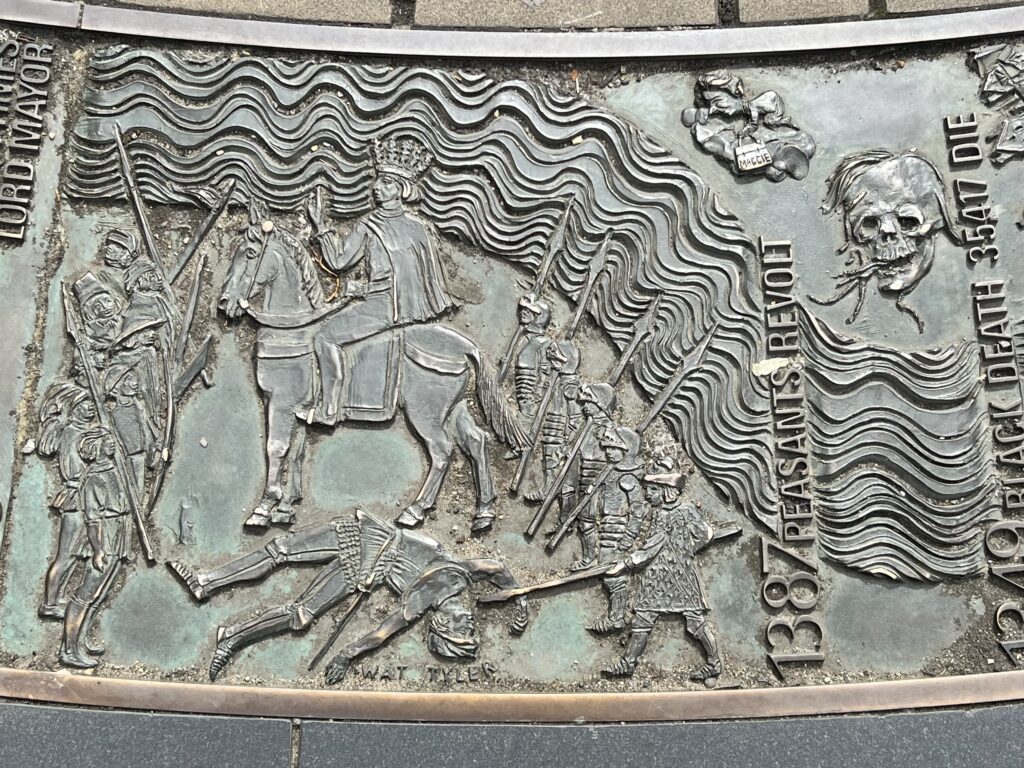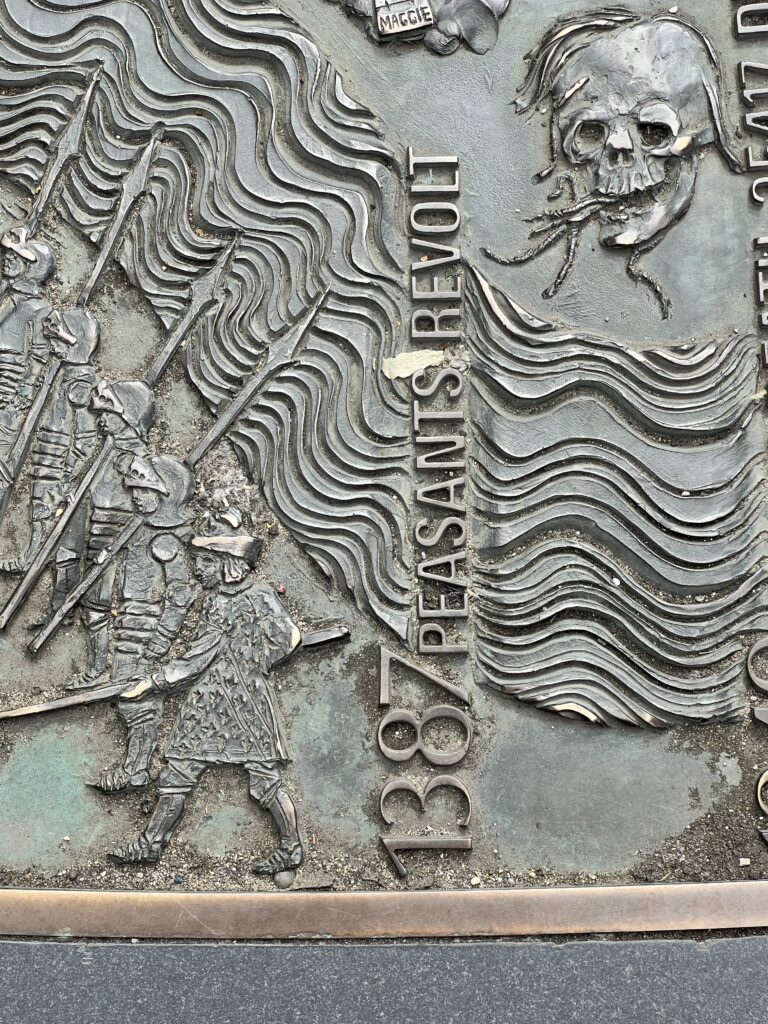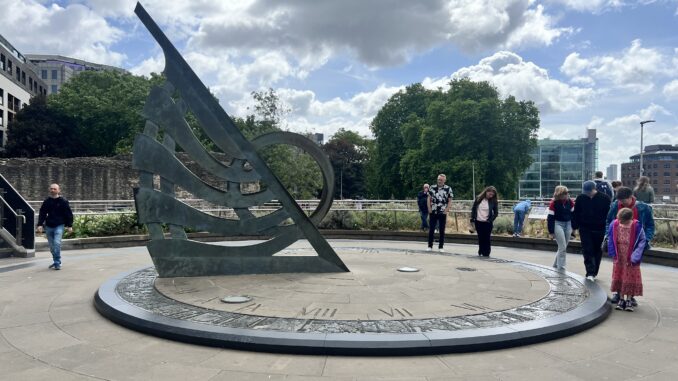
Step out of Tower Hill tube station and between you and the sight of the outer walls of the Tower is a raised piece of ground that is (apparently) called Wakefield Gardens.
This area was laid out as open space in 1967 when the station was opened, and it was remodelled in the early 1990s when the curious innovation of having the entrance and exit to the tube on different levels was created.
The gardens then became a circular, raised ‘viewing platform’ to the Tower, on which, on any given morning, tours groups convene to be told (sometimes accurate) stories about the castle over the road.
This space was designed by landscape architect John Chitty who conceived the idea of a giant sundial at its centre, and the sculptor Edwin Russell was commissioned.
The sundial has, to quote Art UK, an “elaborate gnomon” (the sticky-up bit that casts the shadow) with the dial set in the ground and a circular bronze border on which is a frieze tracing the chronology of the city. (To me the gnomon is the TFL roundel, with rail lines running into it.)
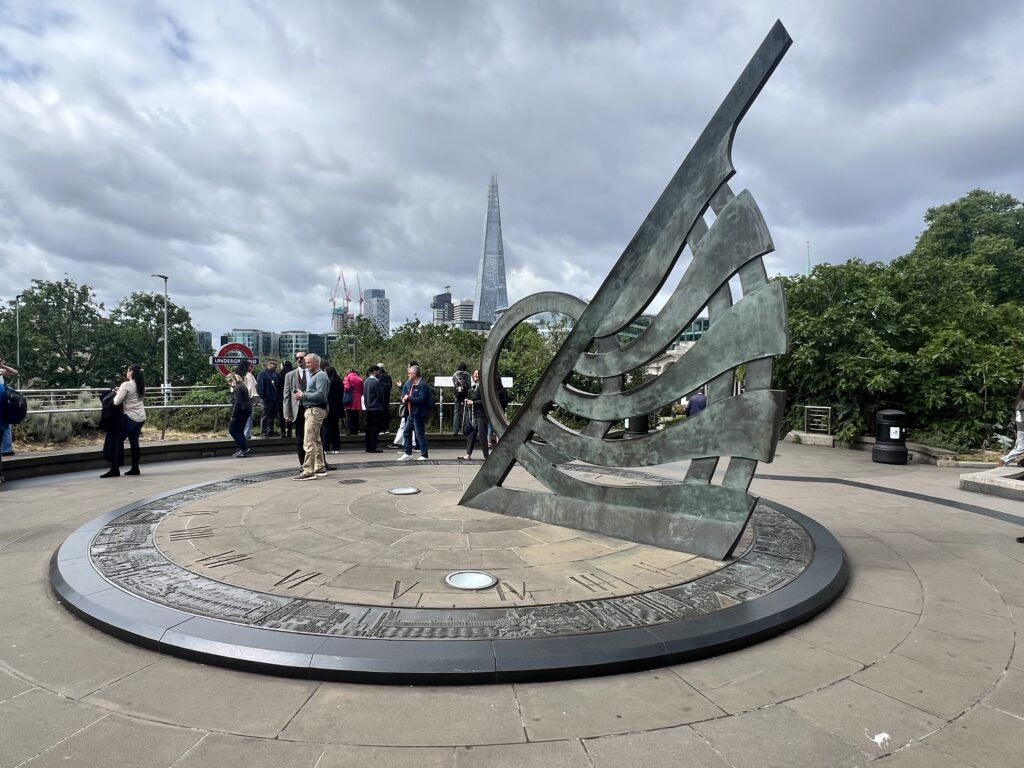
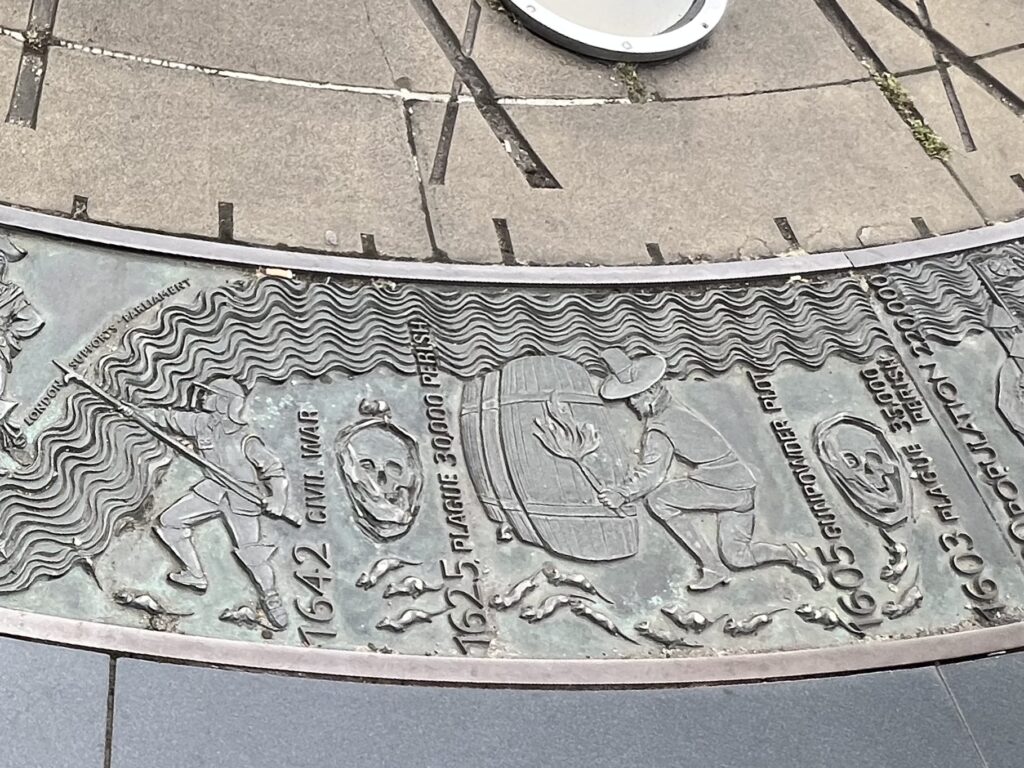
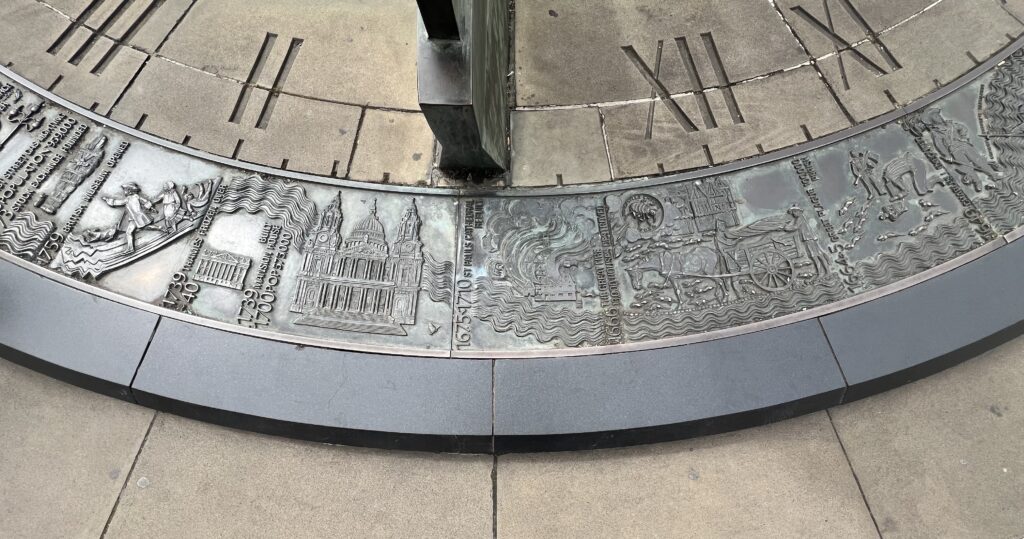
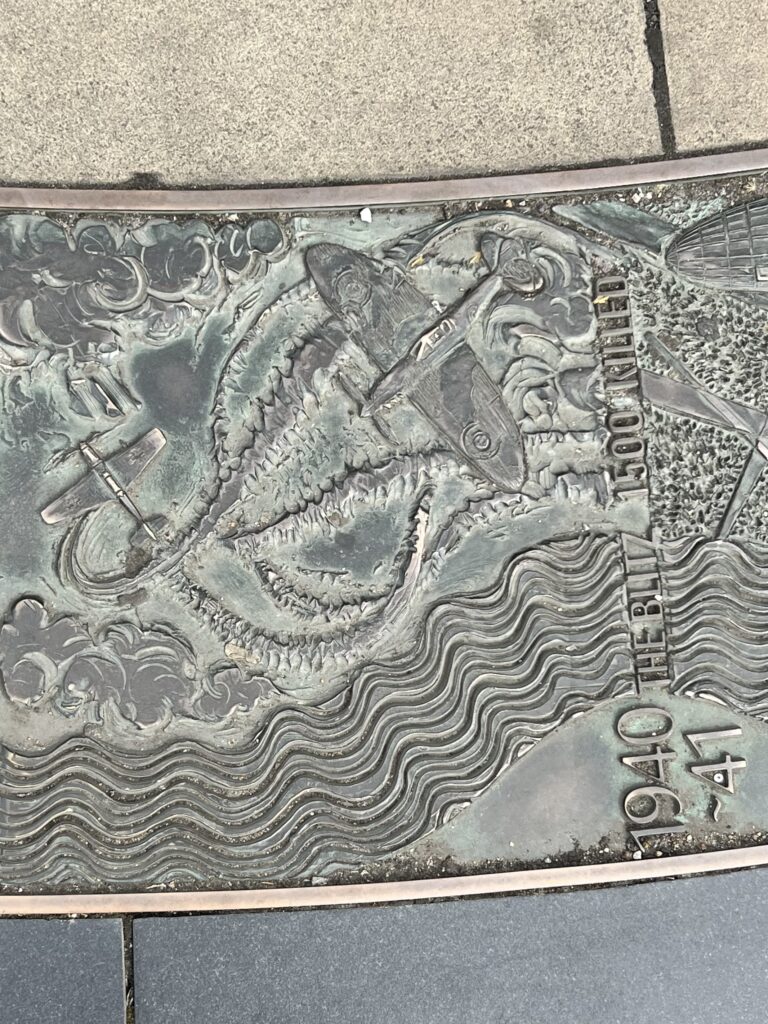
For more of this sort of stuff, follow StuffAboutLondon on social media. For details click here
Sign up here for my monthly newsletter, or follow me on Instagram, or the StuffAboutLondon Facebook page.
This was unveiled in 1992, almost the inflection point for the capital when, after 50 years of decline, the population of the city starts to grow again, and the place enters a boom time, becoming a tue ‘world city’, a place where people want to come.
The frieze runs clockwise (or sun wise I suppose), starting at the southern edge of the dial with the Roman invasion of 43CE and running through notable dates – marking plagues, fires, wars, buildings – and less notable ones (mainly transport based, reflecting the fact that it was London Transport that commissioned the gardens and the sundial), and it’s really rather nice.
It ends with the Thames Barrier’s construction and so is something of an historical snapshot – no Olympics, no London Eye, no wacky skyscrapers, no royal jubilees – a very different city to what it is now but, as the frieze shows, the present is formed by our past, as the future is being formed by our present.
And the egregious error? Take a look at the Peasants’ Revolt panel from the sculpture. 1387? Oh dear.
